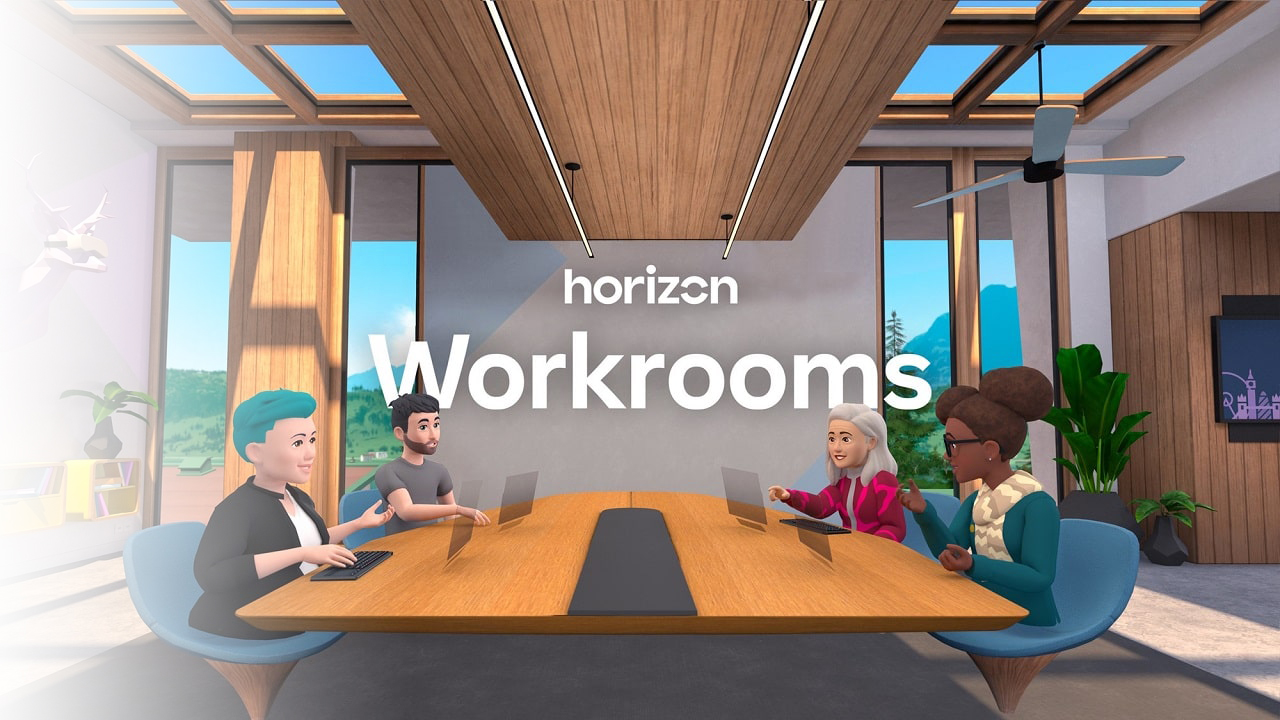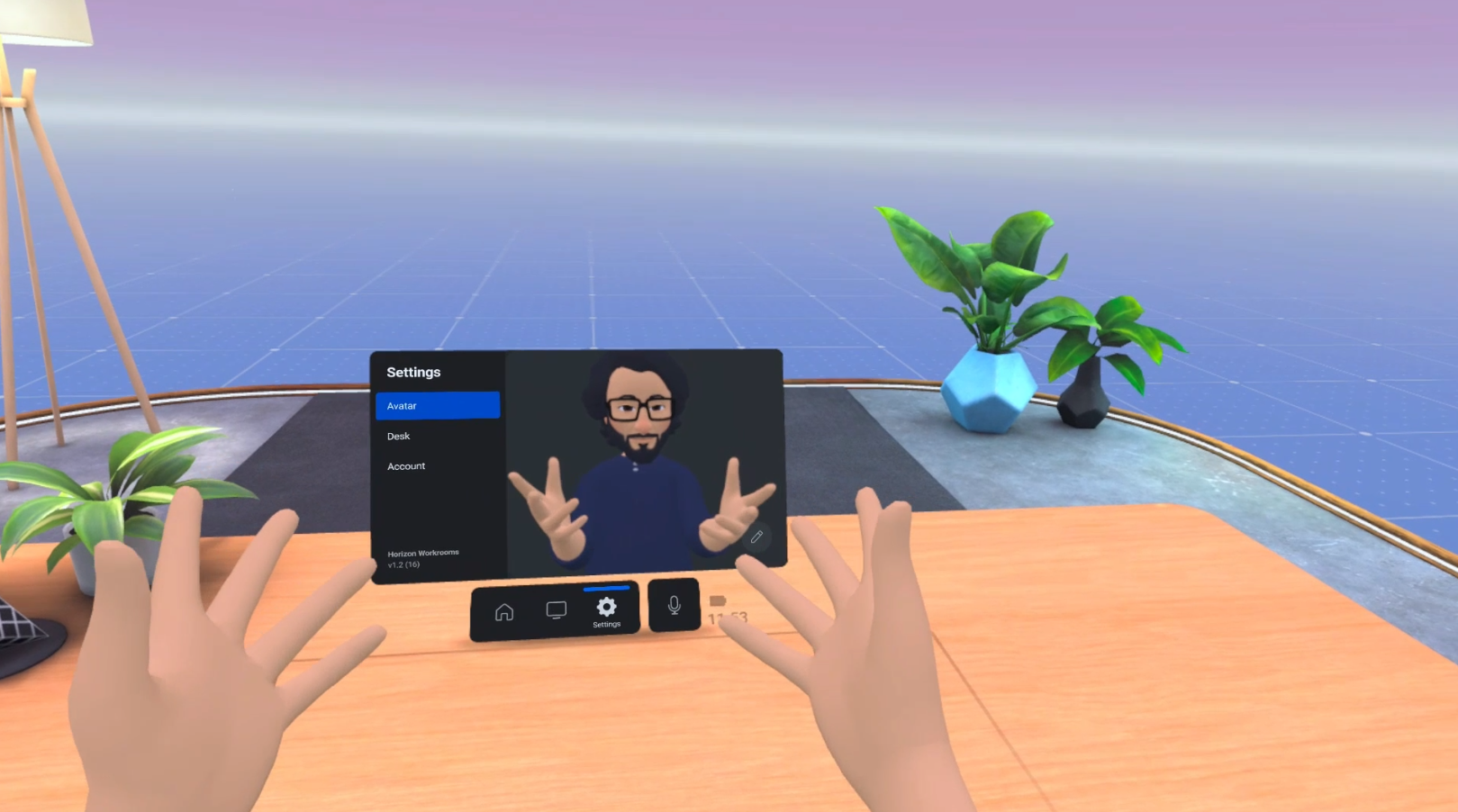Landed to Horizon to bridge the gap of the remote working

Alone and struggling with Google Meet's fickle connection or immersed in a virtual space with your colleagues' avatars? Here, we look at social VR tools bringing workspaces in the metaverse. We ask ourselves how much they overcome remote working practical and social limits. We had the chance to try Horizon Workrooms, and this is what we think about it.
From technical support to alienation, smart-working weaknesses
If it's true that you have to look at the glass half-full, then the pandemic has had some positive implications in the professional sphere. As many have pointed out, the need for social distancing has been an accelerator for remote working: for the technologies supporting it; and for workflow management procedures. Over these two years, we have understood both the advantages and the shortcomings of this solution. The flaws still weighing on remote working are all those difficulties arising during activities that require collaboration between colleagues. When we need technical support or strategic feedback, it is often not easy to receive immediate answers if we are physically far away.
However, this is perhaps a minor limit. Thanks to the large-scale proliferation of digital platforms, communication became easy. The most relevant weakness of telecommuting seems to be related to people's social dimension. Many have pointed out that spending all the day alone instead of being in a crowded office is alienating. Moreover, combining the home environment with professional needs can compromise relationships with family members and roommates. Finally, companies feel uncomfortable when they try to shape a sense of belonging among employees from remote.
Beyond Teleconferencing Tools: Social VR Platforms
To overcome the weaknesses just listed, companies have taken advantage of the possibilities offered by digital technology as never before. Everyone has become familiar with Zoom, Meets, Slack, and other tools simplifying interactions (or supposed to do so). However, even these alternatives seem to meet some of those limits already described. The VR world has tried to offer solutions. Now, we can experience a "close" relationship with colleagues and staff members in the metaverse. Mozilla Hubs, Moot, The Wild, MeetinVR are social VR platforms that ensure a good level of personal involvement within workflows. Also, they allow a certain degree of warm relationships.
Among these alternatives, the one that has received the most attention is Zuckerberg's new product: Horizon Workrooms. The application is still under development: much needs to be done to improve functionality, graphics, and quality of experience. However, it seems to be the option that can grow fast and can be widely adopted. With the launch of the first version, Meta wants to provide a tool that can "transport us to a place where it is possible to be more productive...to decrease the barriers that prevent you from communicating with others and feel free to work when, where and how you want."
Features and functionality of Horizon Workrooms
Despite good intentions, the above premises remain: we are still in the early days of technology, and forthcoming developments should show that we are on track. However, it is worth giving an overview of what are the peculiarities of Horizon. First of all, the platform can only be used in countries where the Oculus Quest 2 visor is supported. Once you download the application, you can set up your desk in the virtual space shared with your colleagues. Avatars and the environment layout itself can be customized according to your preferences.

Features distinguishing Horizon from other solutions are the functions and tasks that can be performed. The keyboard, notepads, whiteboard, and all the physical supports you need in a work environment become virtual. You wear the headset and are in the office. Once you are there, you have access to your PC or Mac: you can take notes during meetings; you can interact with other avatars; you can share files, ideas, and images; you can give calls, and invite guests for up to 16 active users and 50 participants.
Practical and socialization limits: can we bet on social VR?
Although Meta's ambitious statement, the goal is not to replace the way people work but to include and give more options to those working remotely. There have been some critics of this new project. First of all, it was pointed out that the headsets are still expensive (although the price is much lower than that of a good smartphone). Also, several features of the platform beta version need to be improved. This is the case, for example, of the keyboard sensitivity. Again, the graphics of offices and avatars are basic. However, we can bet that Zuckerberg will take into account user feedback and overcome these practical gaps.
At the beginning of the post, we emphasized that remote working can have relevant psychological/social implications. Smart-working can be alienating, limits collaboration, and undermine a sense of belonging to certain degrees. Horizon and other VR platforms seem to be looking for ways to overcome these problems. It's hard to say today if and to what extent they succeed in doing so. However, we can bet that social VR is more effective than currently widespread tools. Inclusion in a shared space and the dynamics of virtual interaction are always better than the solitude of one's own apartment or the intermittent communication of online meeting apps.
For more details on social VR and to find out how to implement a virtual workspace, feel free to contact us.